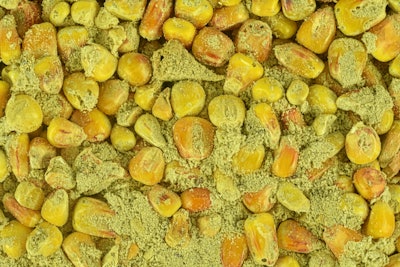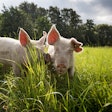
Feed formulators could get a little more bang for their buck if they added certain strains of fungi to their dried distillers grains with solubles (DDGS), according to new research from the University of Minnesota.
The study determined that adding certain fungi — strains typically associated with food-grade solid-state fermentation — to DDGS and allowing it to grow for nine days decreased the ingredient’s deoxynivalenol (DON), zearalenone (ZEN) and aflatoxin content. It also helped reduce the phytate present in the DDGS, while the fungal biomass itself added key essential amino acids to the mix, creating a more balanced protein profile.
It’s still early days for this technology, according to Xiao Sun, a University of Minnesota researcher and one of the study’s authors. More work is needed to develop a solid-state fermentation process that would function at the scale needed to break into animal feed markets. But if that barrier can be overcome, Sun said he believes it could hold the key to unlocking the use of more byproducts and coproducts in animal feed.
Solid-state fermentation isn’t a new technology per say, Sun said. But the process, which underlies the creation of food products such as kimchi, is generally more popular in Asian countries. Western countries, on the other hand, have leaned toward liquid fermentation methods, which are easier to automate and less labor intensive than solid-state fermentation.
Even so, Sun believes it should be possible to scale up the solid-state fermentation technology to meet the needs of animal producers. The University of Minnesota is working on a technique to automate the process so that the fermentation itself can take place in large bags, similar to the ensiling process that is already used to make corn silage for cattle feed.
If successful, the fermentation process wouldn’t require an energy input and could be highly modular, allowing the processing to take place either at the site of an ethanol facility producing DDGS, or at the farm. And it could have applicability to multiple species or feed ingredients. The University of Minnesota, which has been experimenting with solid-state fermentation for two to three years, has successfully fermented canola meal, crop residues and food waste, Sun said.
Those latter categories of ingredients — crop residue and food waste — are the focus of ongoing work at the University of Minnesota. One of the university’s collaborators is already using the technology to improve fruit and vegetable waste to feed to cattle, Sun said, and the university expects to begin feeding trials in earnest in the next year or two.













